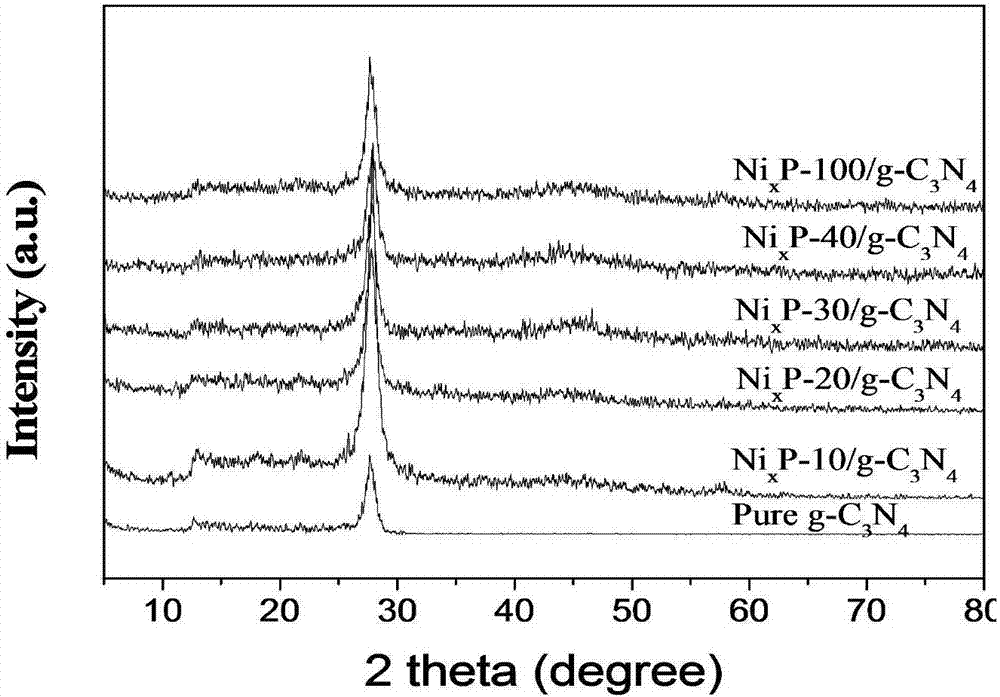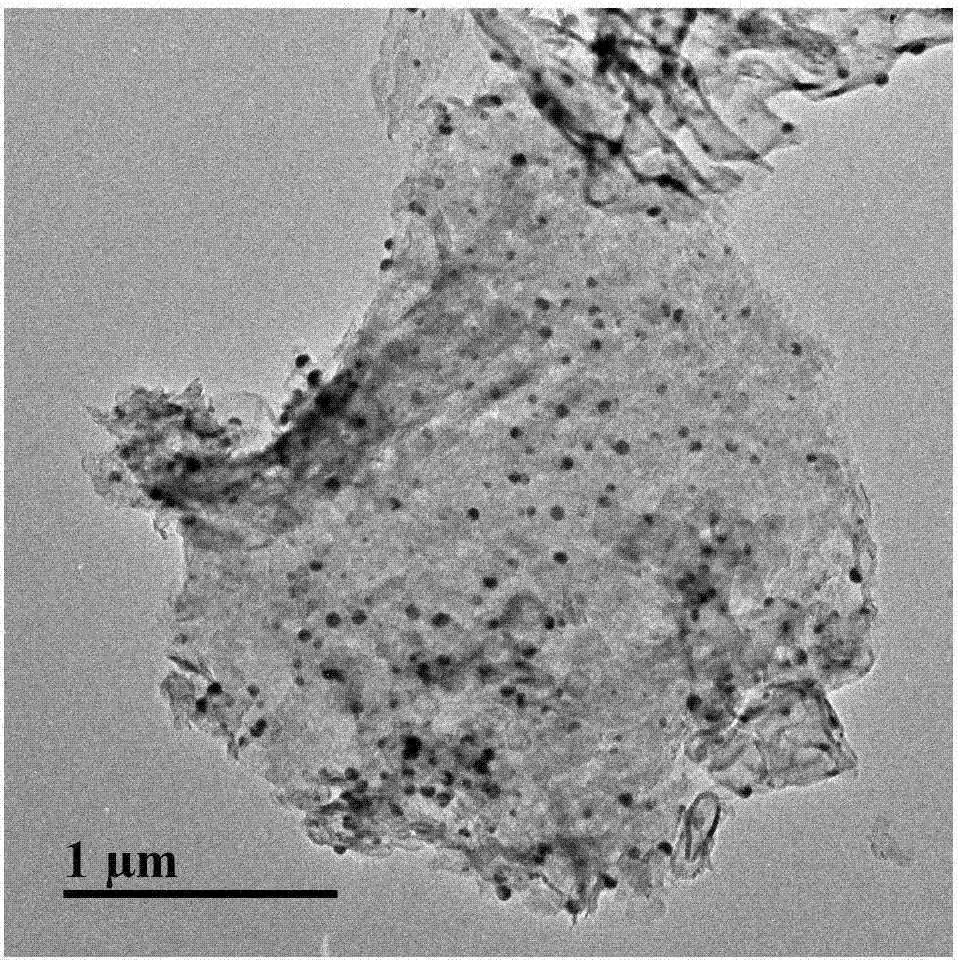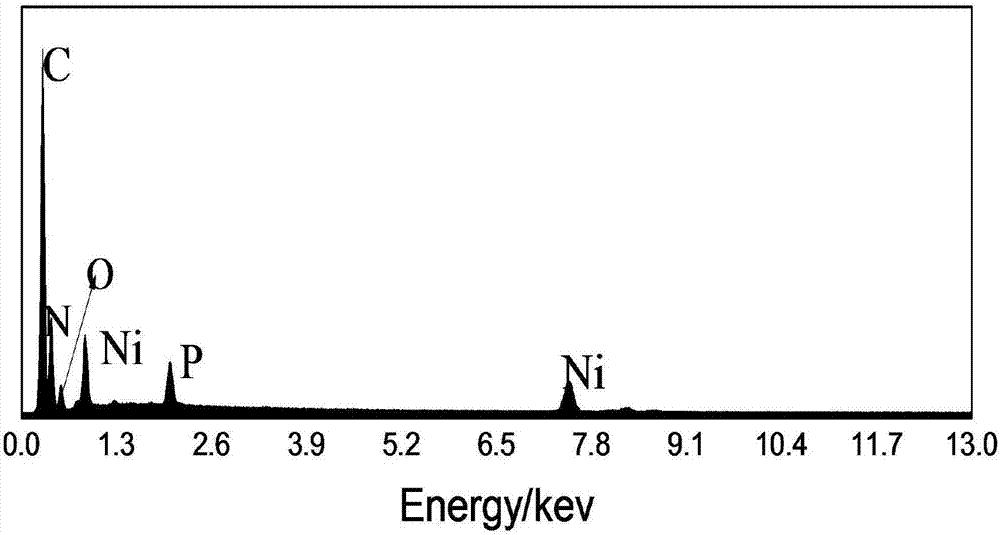Simple preparation method of amorphous nickel phosphide/graphene-like carbon-nitrogen compound composite catalyst
A technology of olefinic carbon nitrogen compounds and composite catalysts, which is applied in the field of photocatalytic hydrogen production and material science, can solve problems such as crises, and achieve the effects of reducing costs, improving catalytic efficiency, and simple methods
- Summary
- Abstract
- Description
- Claims
- Application Information
AI Technical Summary
Problems solved by technology
Method used
Image
Examples
Embodiment 1
[0018] (1) Take 20g of thiourea and place it in 4 crucibles, place the crucibles in a muffle furnace and raise the temperature to 550°C at a rate of 2 degrees per minute, calcinate for two hours, take out the crucibles when the temperature drops to room temperature, and grind the solid into Powder, put the crucible containing the solid powder in a muffle furnace, raise the temperature to 500°C at a rate of 2°C per minute, calcinate for two hours, and take out the yellow-white solid powder after cooling down to room temperature to obtain graphene-like carbon nitrogen compounds;
[0019] (2) Get 30mg of graphene carbonitride and place it in a 25mL single-necked flask, then add 4mL of nickel sulfide aqueous solution (0.1mol / L), 4mL of sodium hypophosphite (molecular formula NaH 2 PO 2 ) aqueous solution (0.7mol / L), 2mL of water, ultrasonic dispersion treatment for 30s, and then use nitrogen degassing for 40min to remove oxygen in the reaction system;
[0020] (3) After the degas...
Embodiment 2
[0023] (1) 5 mg of the graphene-like carbonitride in Example 1 is placed in a 25 mL round-bottomed flask, then 2 mL of triethanolamine and 8 mL of water are added, ultrasonically dispersed for 30 s, and then nitrogen degassing is used to remove oxygen in the reaction system for 40 min; The round bottom flask was irradiated under 300W xenon light (equipped with AM 1.5G filter). After the reaction, the hydrogen gas generated in the reaction was detected by thermal conductivity-gas chromatography. After 2 hours of reaction, the hydrogen production rate was 27 μmol g -1 h -1 .
Embodiment 3
[0025] Put 5 mg of the amorphous nickel phosphide / graphene-like carbonitride composite catalyst in Example 1 into a 25 mL round bottom flask, then add 2 mL of triethanolamine and 8 mL of water. Ultrasonic treatment for 30s, use nitrogen degassing for 40min to remove oxygen in the system, place the round bottom flask under the solar simulator for light, after the reaction, use thermal conductivity-gas chromatography to detect the hydrogen generated in the reaction, and react for 2h to produce hydrogen The rate is 8585 μmol g -1 h -1 , which is 317 times faster than that of pure graphene-like carbonitrides.
PUM
 Login to View More
Login to View More Abstract
Description
Claims
Application Information
 Login to View More
Login to View More - R&D
- Intellectual Property
- Life Sciences
- Materials
- Tech Scout
- Unparalleled Data Quality
- Higher Quality Content
- 60% Fewer Hallucinations
Browse by: Latest US Patents, China's latest patents, Technical Efficacy Thesaurus, Application Domain, Technology Topic, Popular Technical Reports.
© 2025 PatSnap. All rights reserved.Legal|Privacy policy|Modern Slavery Act Transparency Statement|Sitemap|About US| Contact US: help@patsnap.com



